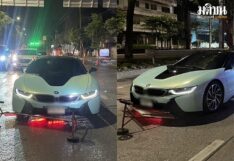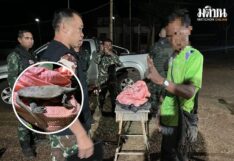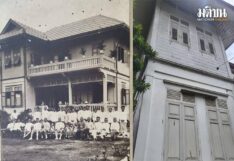| ผู้เขียน | Wirot Poonsuwan |
|---|---|
| เผยแพร่ |
Fare rates for the high-speed rail linking the three airports in and near Bangkok with the Eastern Economic Corridor are fixed in the concession contract and, to reassure the public and the concessionaire of the certainty of the levels of the fare prevailing over any period of time, the government project owner are required to announce and publish the rates periodically.
As the concessionaire and its syndicate of lenders wish, the right to collect the fare and other revenues from commercial operations will straightforwardly be vested in the concessionaire, offering it the comfort to control the project cash.
But through the complicated maze of legalese and difficult cross-references in concession provisions, something significant is missing that could impact on revenue streams of all the project stakeholders: the concessionaire, the lending banks and last but not least the government project owner itself, who shares revenue with the concessionaire.
Join Three High-Speed Rail Projects Together
One spectacular feature of the 3-airport high speed rail is the role of the concessionaire as the connector of the three high-speed rail projects, tasked with designing and building the foundation and structure of the civil work for the joint track with the other two high-speed rail projects: the Northern High-Speed Rail and the Northeastern High-Speed Rail.
This joint track for all the 3-high speed rail projects runs from Bang Sue, the new rail hub in a northern suburb of Bangkok scheduled to open for operation late this year, heading north for 14 kilometers to its destination at Don Muang Airport to make whole the link of the 3-airports: Don Muang, Suvarnabhumi and U-Tapao.
Design and Build Parts of Red Line Suburban Mass Transit System
The concessionaire does not only build and operate the high-speed rail, it is granted the right to design and build a suburban mass transit system in support of the high speed rail as well.
In the other direction southward, starting from the new rail hub at Bang Sue, the concessionaire is mandated to design and build the foundation and structure, a civil work, of an 11 kilometer section of the suburban Dark-Red Line, with a mix of elevated and underground tracks, to avoid Bangkok’s notorious traffic congestion at road-crossings.
This Dark-Red Line portion is to end at the current historical rail hub, Hua Lamphong in inner city, solving train delays permanently as trains departing from Hua Lamphong in the rush hours of mornings and afternoons no longer have to stop at the Yommaraj crossing to wait for the road traffic to pass.
The 3-airport concession extends to cover the design and construction of the Light-Red Line running east for 7.8 kilometers from the new hub in Bang Sue as an elevated train, then changing elevation to become a subway before emerging as an elevated skytrain to join other lines at the present Phaya Thai station downtown, before moving on further to Makkasan and Huamark stations in parallel with the increasingly popular Airport Rail Link.
Airport Rail Link to be Transformed
The existing Airport Rail Link owned by the government project owner has been thrusted into the concession with the concessionaire freshly commissioned to design, build, finance, operate and maintain the Airport Rail Link renovations to transform the project into parts of the 3-airport high speed rail.
The government project owner continues to own the Airport Rail Link during and after the renovations. New assets from the renovations are to be transferred “Build-Transfer-Operate” or “BTO” style by the concessionaire to the government project owner without any compensation no later than the date of commencement of the commercial operations.
Airport Rail Link Extension from Phaya Thai to Bang Sue to Don Muang
The 3-airport high-speed rail concession will not be completed without the Airport Rail Link Extension expanding beyond the present end of the line at Phaya Thai station headed northbound to the Bang Sue central hub to stop at Don Muang Airport. Since Phaya Thai station already belongs to another line, the extension will be made up of two stations: Bang Sue and Don Muang, as well as train depots.
Obligations of the concessionaire remain to design, build, finance, operate and maintain the Airport Rail Link Extension: design, build and finance during the construction period and operate and maintain during the commercial operation, at the start of which the concessionaire must transfer the ownership of the extension facilities to the owner.
45 Years of Collecting Fare Revenue
Deducting the hard construction period of 5 years from the 50-year concession, the concessionaire will most likely enjoy 45 years of collecting fare revenue from the 3-Airport High-Speed Rail, the Airport Rail Link and the Airport Rail Extension and other revenues from any affiliated commercial operations.
All this reaping of benefits will be taking place during the commercial operation of the project after the completion of the construction and the issue by the government project owner of the certificate of final acceptance that is expected to specify the commencement date of the commercial operation to be no more than 15 days from the date of the certificate.
The concession for the commercial operation will last 45 years from the commencement date specified in the certificate of final acceptance.
Joint Track between Bang Sue and Don Muang and Red Line Are the Problem
There might have been some mistakes in writing and negotiating the concession contract.
The concession seems to say that the concessionaire has the duty to design and build the joint track for the 3-high speed rail projects on the 14 kilometer stretch northbound between the Bang Sue hub and Don Muang Airport, the 11-kilometer southbound Dark-Red Line between Bang Sue and Hua Lamphong, and the 7.8 kilometer eastbound Light-Red Line from Bang Sue to Phaya Thai, discussed at the beginning of this article.
But there is no mention of the concessionaire’s right and obligations to finance, operate, maintain and transfer the ownership of these three joint civil works interfacing with other transportation projects.
The concession omits altogether the explicit obligation of the concessionaire to finance the design and construction of these supplemental infrastructure projects and to transfer their ownership to the government project owner at the commencement of commercial operation.
Can Concessionaire Collect Fare from Interface Facilities?
Nor does the concession refer to the concessionaire’s duty to operate and maintain the three connecting facilities.
The definitions of the 3-airport high speed rail project and other related projects probably overlook the add-on civil work, thus the missing jigsaw.
Most importantly, the concession is silent on the question whether or not the concessionaire is entitled to collect fare revenue on the additional structures and can earn revenue from commercial operations associated with this “Joint Civil Work for the Related Projects.”
The financial risk
Against the interests of the concessionaire and the lenders, as it stands, the concession could be interpreted to impose on the concessionaire the obligation to build the interface facilities without its rights to earn income from those facilities.
The BTO mantra would be left with only the “B” for build, while the abbreviations “TO” for transfer and operate disappear down the cracks.
Unfavorable to the government project owner, the concession might mean the concessionaire is freed from any obligation to transfer the facilities to the owner or share this part of revenue with it as the structures fall out of the scope of the project and other related projects.
The uncertainty and omission poses both financial risk and legal danger across the board to the concessionaire, the lending banks and the government project owner alike.
Wirot Poonsuwan is Senior Counsel and Head of Special Projects at Bangkok law firm Blumenthal Richter & Sumet and can be contacted at [email protected]










